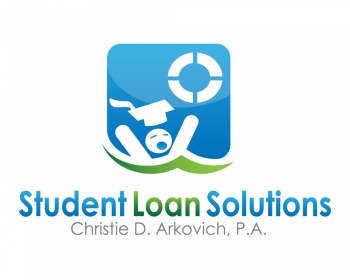 There is a separate process from the Social Security Administration’s process that is available through NelNet to discharge federal student loans (no matter who the servicer is). It’s called a Total and Permanent Disability Application. The good news is that it has been taking our firm only about two months to obtain this 100% discharge of student loans. It’s also tax free for any applications approved prior to 2025. After that, it will depend upon whether the program’s tax forgiveness waiver is extended by Congress.
There is a separate process from the Social Security Administration’s process that is available through NelNet to discharge federal student loans (no matter who the servicer is). It’s called a Total and Permanent Disability Application. The good news is that it has been taking our firm only about two months to obtain this 100% discharge of student loans. It’s also tax free for any applications approved prior to 2025. After that, it will depend upon whether the program’s tax forgiveness waiver is extended by Congress.
A couple critical issues arise when filing these applications. First, is the need to get it right the first time around — in other words don’t file a half-%$$ application and expect it to be approved by the Department of Education. Second, many jobs nowadays are performed remotely and at all hours of the day or night. So an employer’s inability to reasonably accommodate an employee under the Americans with Disabilities Act may need to be explored and included as a supplement to the TPD application. Third, you can work, although at a minimal level and earning no more than the poverty level for a family of two.
This begs the question: how much work can be performed, but yet qualify as being unable to engage in “substantial gainful activity”.
The TPD Application states that substantial gainful activity means a level of work performed for pay or profit that involves doing significant physical or mental activities, or a combination of both. This is a rather vague and nebulous definition, which I suspect leaves doctors without much guidance or confidence in making a certification.
The Social Security Administration, however, also uses the phrase substantial gainful activity and ties that to a specific level of earning potential. For 2019, that amount was no more than $1,220 a month of income, which works out to $14,460 annually or 38.83 hours a week at a $7.25 minimum wage job. For blind individuals, this is $2,040 a month or earning $11.77 an hour at a full time job. (This amount will increase at the end of October.) The National Consumer Law Center (“NCLC”) book indicates at §10.7.3.1 that the Department of Education borrowed this term from the Social Security Act.
Confounding this, §10.7.6, states that the Department of Education has taken the position that a physician cannot certify a total and permanent disability if the borrower is currently able or expected to work. However, there isn’t a citation to where this limitation can be found. The NCLC book does point to the contradiction that borrowers are allowed to work and have minimal income during the three year potential reinstatement period.
Does the Social Security definition provide a usable, much clearer and more objective basis for a physician, psychiatrist or osteopath to base his or her opinion on? I’m of this opinion, particularly for senior citizens, for whom Social Security Disability is no longer available, with the idea being that a doctor could be asked “Given their current age, health and existing medical conditions, can your patient work a full time, minimum wage job without endangering his or her health?” They wouldn’t necessarily be working at the time of certification, but this would give the physician a gauge against which to evaluate them.
I used to practice in the area of employment law. This has helped our firm to use that experience as a former employment attorney to argue why the person cannot perform the essential functions of any job they’ve been trained to do or otherwise could do by virtue of their education, even with reasonable accommodations by their employer under the ADA.
One of the problems I’ve seen, which the NCLC Student Loan book again reiterates at §10.7.4.1, is that these applications get rejected because the form has only a small amount of space and doctors, with their notoriously illegible handwriting, only include the diagnosis without descriptions of how that condition prevents the borrower from working and earning an income. This seem exactly why and where borrowers benefit from having an attorney as their advocate.
 Reboot Your Life: Tampa Student Loan and Bankruptcy Attorney Blog
Reboot Your Life: Tampa Student Loan and Bankruptcy Attorney Blog


